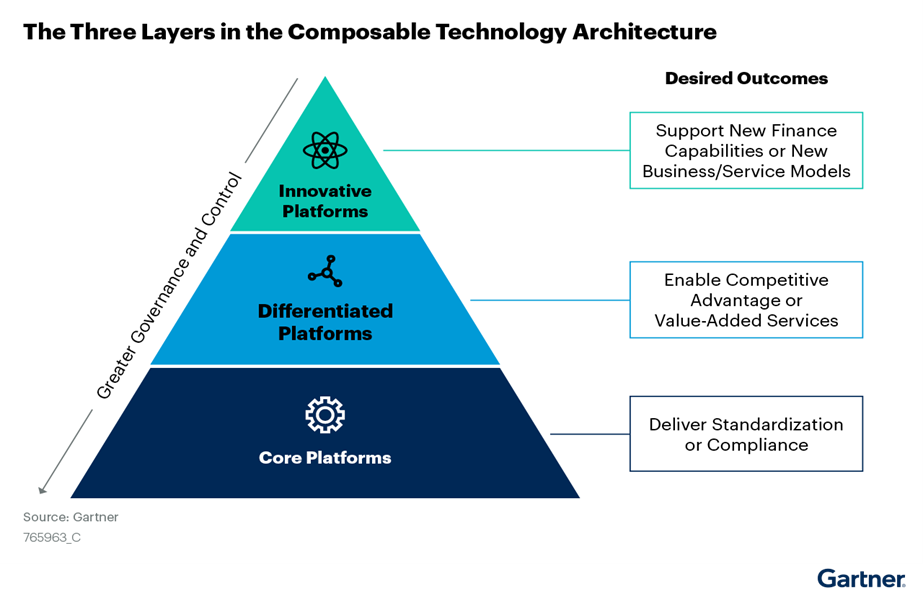Gartner Says by 2024 60% of Finance Organizations Will Seek Composable Finance Applications in New Technology Investments
Gartner has identified a new model for CFOs based on a composable technology paradigm that focuses on modular technology solutions delivered by best-fit vendors that enable specific finance capabilities. The framework is built upon three distinct layers of composable platforms (groups of related finance applications) based on the main purpose and the strategic value they deliver (see Figure 1).
CFOs are near unanimous in their intentions to invest more in technology in 2023, yet most will be held back from achieving their objectives by legacy mindsets in their approaches to upgrading their technology systems. Traditionally, most finance department technology planning prizes elements that are not compatible with agility and innovation, such as selecting large complex systems that can be used by multiple departments and favoring a single vendor approach for technology selection.
“The needs of the business and dynamic nature of new technologies have outrun the traditional technology planning models relied upon by CFOs,” said Nisha Bhandare, VP analyst, research, in the Gartner Finance practice. “What may appear to be efficient and practical on the surface actually keeps CFOs stuck in outdated and siloed systems, in what we call the ‘trap of traditional thinking’.”
Figure 1: The Three Layers in Composable Technology Architecture

Source: Gartner (December 2022)
Each layer of the composable technology architecture is dedicated to the main purpose and value it provides, and can be managed to different timelines, governance models, and needs of the business.
- Core Platforms aim to deliver standardization and compliance within finance capabilities. The pace of change, and updates within these platforms, is typically slow since these capabilities are well-established and common throughout most industries.
- Differentiated Platforms enable unique or differentiated capabilities, including scenario planning and insight differentiation, and those activities that allow finance to support a specific industry. The pace of change within these platforms is typically 1 to 3 years, reflecting the need to accommodate frequent updates and changing business dynamics.
- Innovative Platforms aim to support an experimental “fail fast” environment for testing new ideas to support the company’s next competitive advantage. It is a fast-moving environment where the pace of change, and need for updates, often occur in under one year, since the capabilities these platforms support are not always fully defined and can include emerging technologies such as predictive analytics and AI.
Bhandare encouraged CFOs to explore a flexible technology governance structure to match the agility that a composable architecture provides, where each layer of the architecture can have tailored governance that better allows for the exceptions that will occur more often among the differentiated and innovative platforms.























